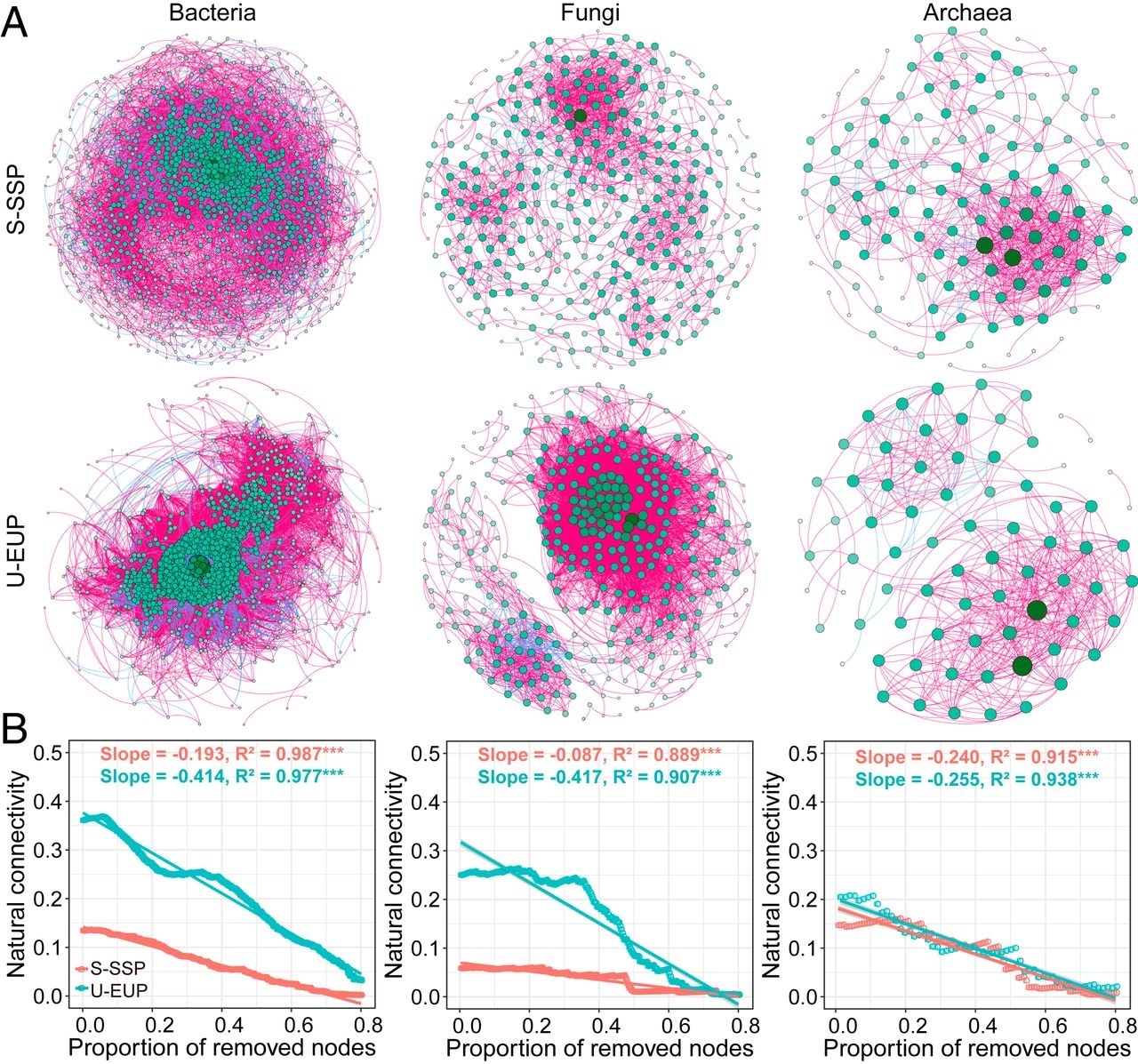Chinese researchers have recently identified a relationship between reduced microbial stability and soil carbon loss in the active layer of deteriorated alpine permafrost on the Qinghai-Tibet Plateau (QTP).

Co-occurrence networks (A) and robustness analysis (B) for microbial communities between lightly (S-SSP) and severely (U-EUP) degraded permafrost. Image Credit: Northwest Institute of Eco-Environment and Resources (NIEER).
The research team, led by Professor CHEN Shengyun from the Northwest Institute of Eco-Environment and Resources (NIEER) of the Chinese Academy of Sciences, and XUE Kai from the University of Chinese Academy of Sciences, performed a combined detailed analysis of soil microbial communities as well as their co-occurrence networks in the active permafrost layer along a vast gradient of permafrost degradation.
The QTP covers the world’s biggest area of high-altitude mountain permafrost. This permafrost differs from high-latitude permafrost and preserves a large amount of soil carbon. When compared to deeper layers, the carbon pool in the active layer soil is more active and immediately impacted by climate change, which is an often-ignored trait of permafrost.
Permafrost deterioration, caused by climate change, may reduce soil carbon stability and cause significant carbon loss, resulting in positive carbon-climate feedback. But the microbial-mediated mechanism that causes carbon loss from the active layer soil in decomposed permafrost continues to be vague.
In this analysis, the researchers noted that the degradation of alpine permafrost decreased the stability of active layer microbial communities, as shown by increased sensitivity of microbial composition to changes in the environment. This promoted edge attacking of the microbial network, or destabilized network properties, and decreased resistance to the node.
The researchers also observed that increased microbial dissimilarity is linked to soil organic carbon loss in highly deteriorated permafrost, thus possibly contributing to positive carbon feedback in alpine permafrost on the QTP.
Source:
Journal reference:
Wu, M-H., et al. (2021) Reduced microbial stability in the active layer is associated with carbon loss under alpine permafrost degradation. PNAS. doi.org/10.1073/pnas.2025321118.